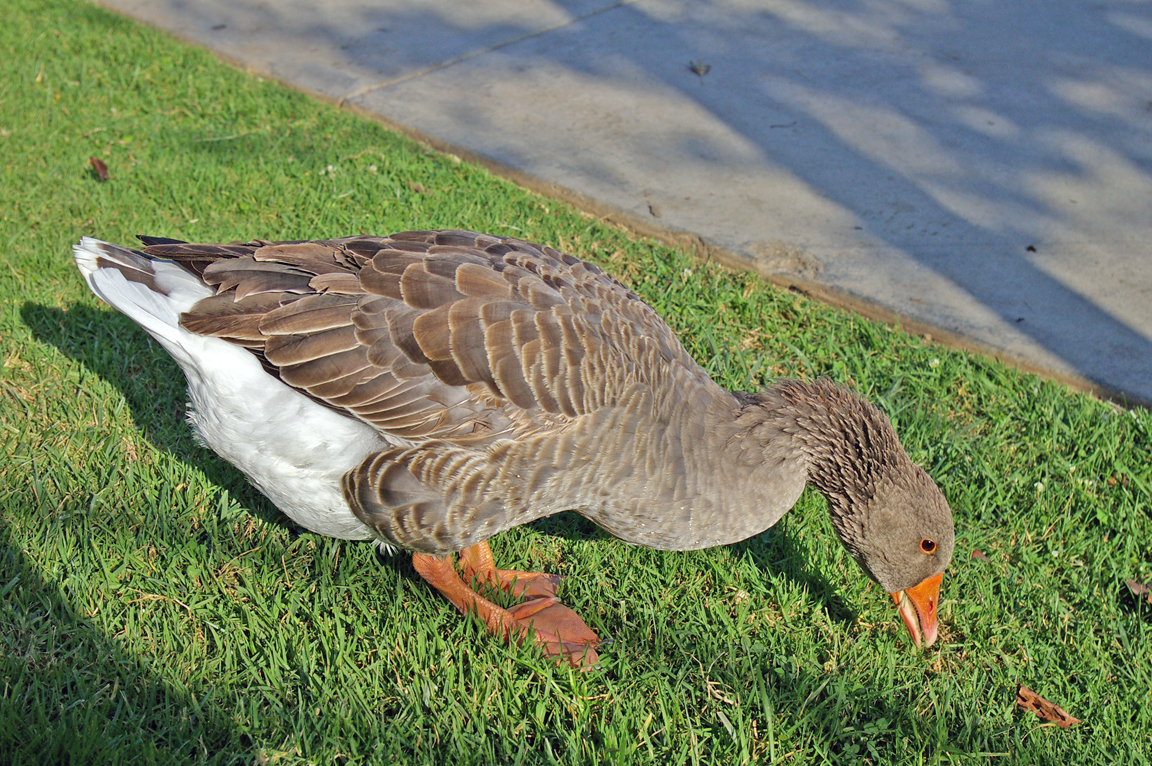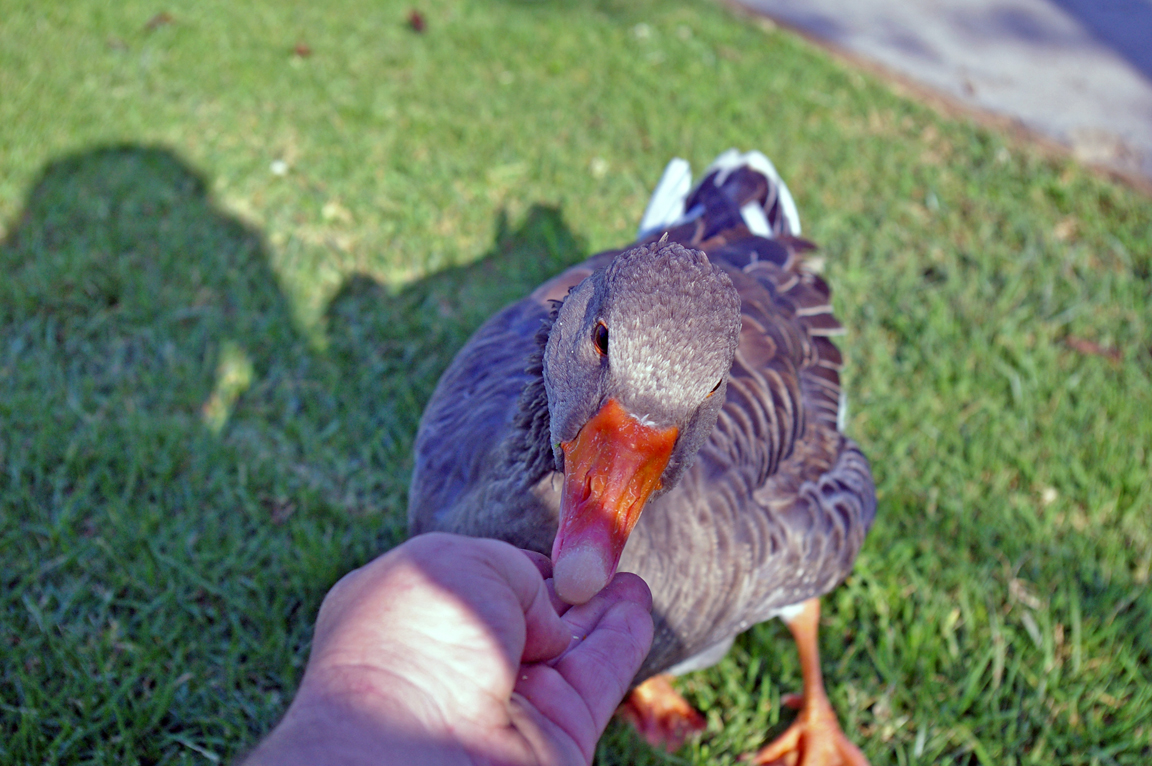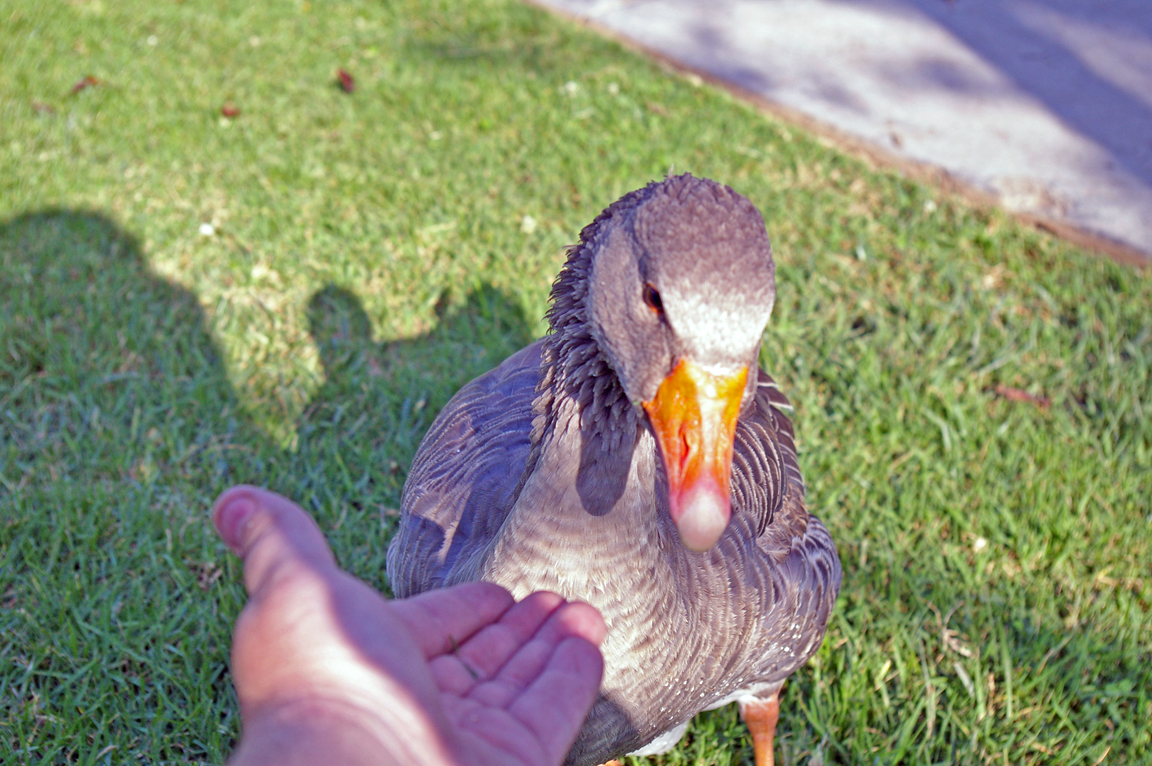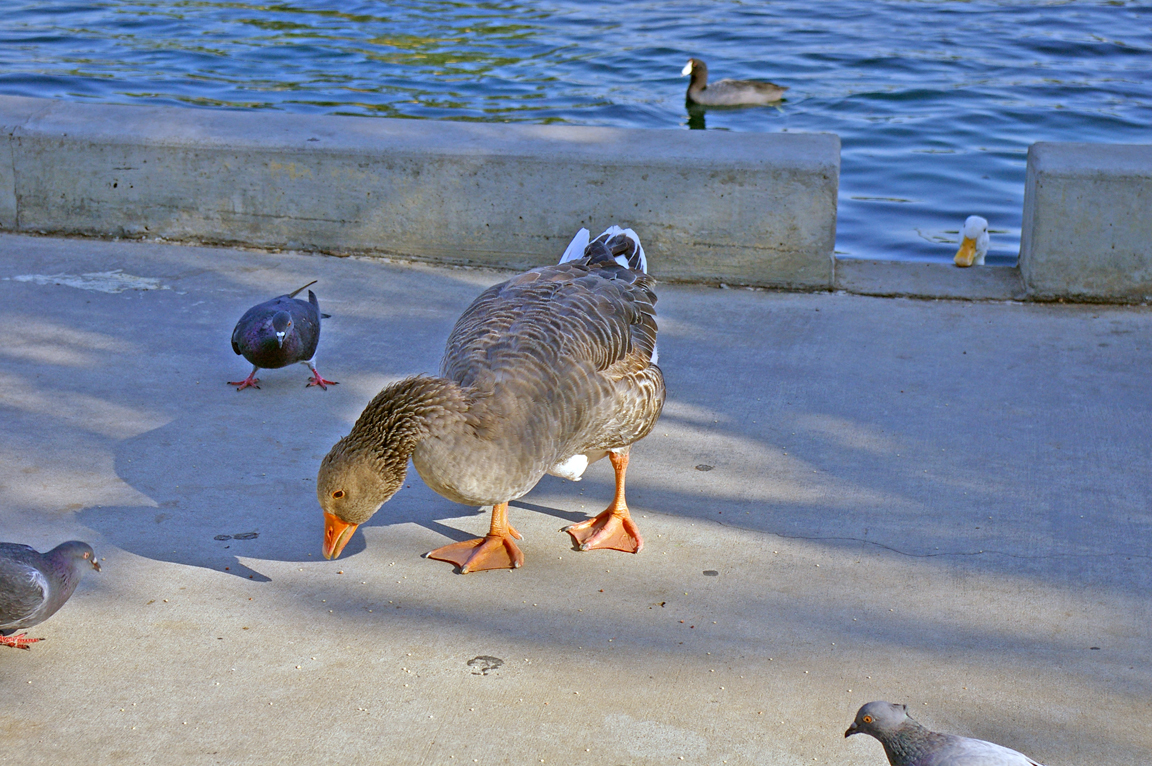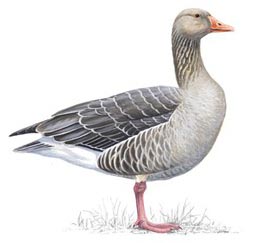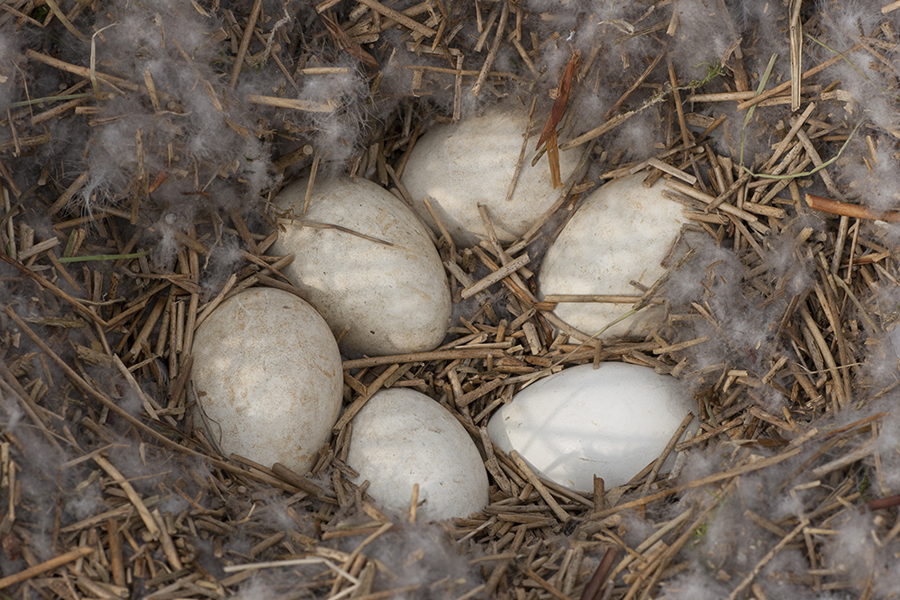|
|
|
 |
Greylag Goose
Domesticated |
| Anser anser | |
The Greylag Goose, Anser anser, is a bird with a wide range in the Old World. It is the type species of the genus Anser.
It was in pre-Linnean times known as the Wild Goose ("Anser ferus"). This species is the ancestor of domesticated geese in Europe and North America. Flocks of feral birds derived from domesticated birds are widespread.
Interesting Information
-
In North America, small populations of Greylag Geese descended from domesticated geese have become established, mostly in city parks and near humans.
-
These geese usually exist as part of larger flocks of Canada Geese.
-
The Greylag Goose can hybridize with the native Canada Goose, producing birds which, to say the least, can be puzzling to birders attempting to identify them.
-
Within science, the greylag goose is most notable as being the bird with which the ethologist Konrad Lorenz first did his major studying into the behavioural phenomenon of imprinting.
-
This species is one of the last to migrate, and it is thought that "greaylag" signifies in English "late", "last", or "slow", as in laggard, a loiterer, or old terms such as lagman, the last man, lagteeth, the posterior molar or "wisdom" teeth (as the last to appear), and lagclock, a clock that is behind time. Thus the Greylag Goose is the grey goose, which in England when the name was given, was not strongly migratory but lagged behind the other wild goose species when they left for their northern breeding quarters.
Description
The greylag is the largest and bulkiest of the grey geese of the genus Anser, but is more lightly built and agile than its domestic relative. It has a rotund, bulky body, a thick and long neck, and a large head and bill. It has pink legs and feet, and an orange or pink bill with a white or brown nail (hard horny material at tip of upper mandible). It is 74 to 91 centimetres (29 to 36 in) long with a wing length of 41.2 to 48 centimetres (16.2 to 18.9 in). It has a tail 6.2 to 6.9 centimetres (2.4 to 2.7 in), a bill of 6.4 to 6.9 centimetres (2.5 to 2.7 in) long, and a tarsus of 7.1 to 9.3 centimetres (2.8 to 3.7 in). It weighs 2.16 to 4.56 kilograms (4.8 to 10.1 lb), with a mean weight of around 3.3 kilograms (7.3 lb). The wingspan is 147 to 180 centimetres (58 to 71 in). Males are generally larger than females, with the sexual dimorphism more pronounced in the eastern subspecies rubirostris, which is larger than the nominate subspecies on average.
The plumage of the greylag goose is greyish-brown, with a darker head and paler breast and belly with a variable amount of black spotting. It has a pale grey fore-wing and rump which are noticeable when the bird is in flight or stretches its wings on the ground. It has a white line bordering its upper flanks, and its wing coverts are light-coloured, contrasting with its darker flight feathers. Its plumage is patterned by the pale fringes of the feathers. Juveniles differ mostly in their lack of black-speckling on the breast and belly and by their greyish legs.
The greylag goose has a loud cackling call similar to that of the domestic goose, "aahng-ung-ung", uttered on the ground or in flight. There are various subtle variations used under different circumstances, and individual geese seem to be able to identify other known geese by their voices. The sound made by a flock of geese resembles the baying of hounds. Goslings chirp or whistle lightly, and adults hiss if threatened or angered.
|
Habitat |
|
Wetlands including marshes, lakes, and damp heather moors. |
|
Behavior |
|
Feeds on vegetation by dabbling in ponds, lakes and, rivers. |
|
Food |
|
Eats grass, cereals, potatoes, and other crops. |
Taxonomy
| Kingdom: | Animalia |
| Phylum: | Chordata |
| Subphylum: | Vertebrata |
| Class: | Aves |
| Order: | Anseriformes |
| Family: | Anatidae |
| Subfamily: | Anserinae |
| Genus: | Anser |
| Species: | Anser anser |
| Subspecies: | Anser anser anser |
| Anser anser rubrirostris |
Similar Species |
None |
|
Bird Sound |
|
It has a loud cackling call, kiYAAA-ga-ga, like the domestic goose. |
|
Eggs look like this |
|
Photo taken from: ARCTOS Collaborative Collection Management Solution |
